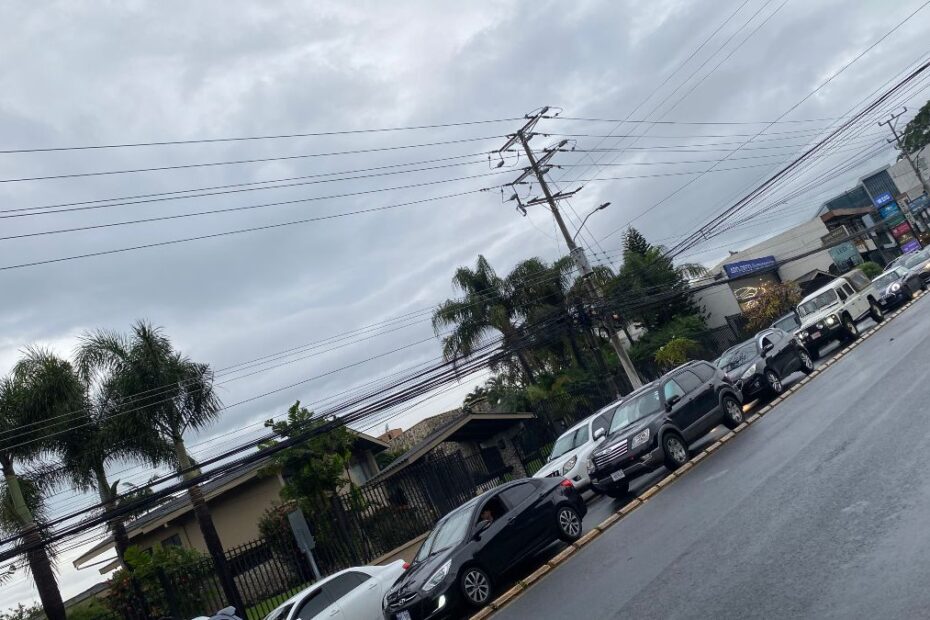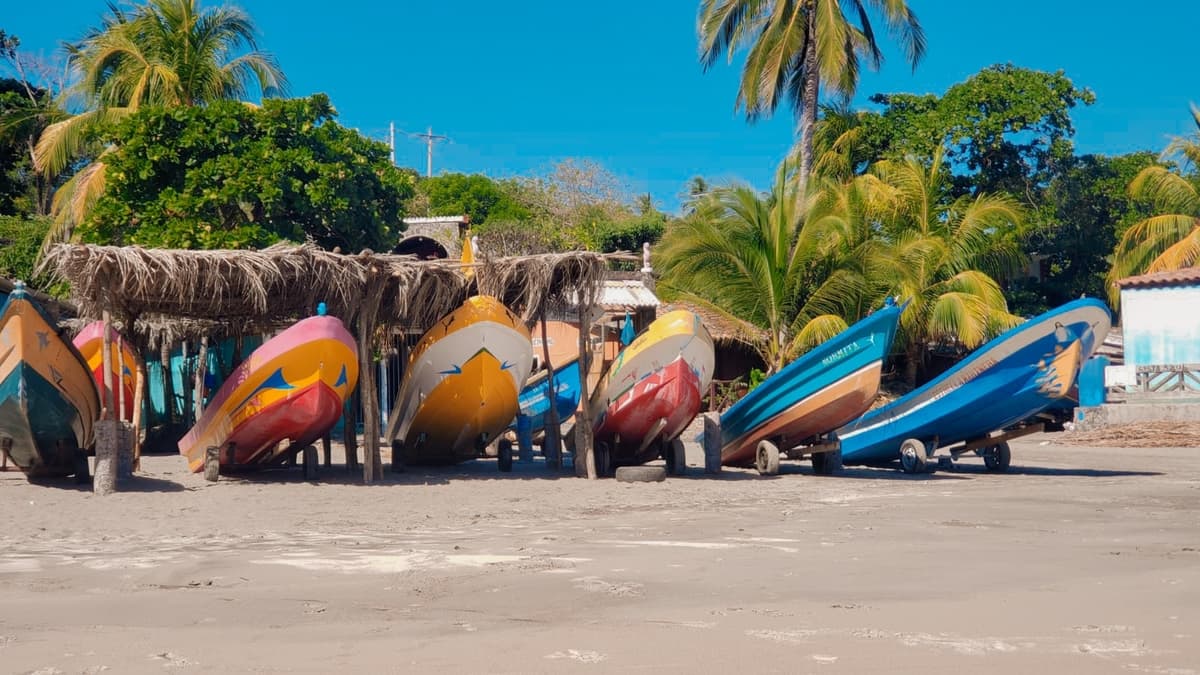A Central America city traffic guide: San Salvador, San José, and Guatemala City top our list of Central America’s worst driving cities. Find out which cities in the region are best and worst for getting around by car.
Any travelers or potential expat who’s ever asked about driving in Central America on the Facebook groups and other forums gets told a set of standard replies that stay pretty much the same, whatever the country. Whether they’re asking about renting a car in Costa Rica or getting around Belize, the answers from locals, expats, and other in-the-knows range from “don’t drive at night” to “have a 4X4” to “drive defensively”. Oh, and “try to avoid driving in major cities”.
That last tip about avoiding major cities is a good one, as most Central American cities are murderous to get around with rush hours and congestion that would put Hong Kong to shame. Central American cities might be smaller than your average global megacity like Mexico City or Los Angeles, but don’t underestimate the traffic nightmare in them.
A combination of narrow streets, one-way systems, poor driving culture, outdated infrastructure, and the basic fact that the region now has far more cars on the roads than ever before, creates a stressful driving experience for many tourists and new expats. Even many locals and old expat hands hate driving around Central American cities. So don’t think that zipping around town in your car here while on vacation is as nice and easy as, say, getting a rental car in the States, Canada, or some genteel European country. Well… outside the cities is fine but inside? No way. It’s public transport or Uber time for many.
But which cities are the absolute worst to drive in, and which ones are actually manageable? Using data from recognized traffic indices like the TomTom Traffic Index and INRIX Global Traffic Scorecard, we can rank Central America’s major cities from traffic nightmare to relatively pleasant driving experience.
We’ll take you (from worst to best) through the major cities across all seven Central American countries. If you’re planning to explore or live in the region, this guide to the best and worst Central American cities to get behind the wheel might be helpful.
San Salvador, El Salvador
San Salvador is Central America’s worst city for drivers. Despite having just over one million inhabitants, residents lost an average of 33 hours sitting in traffic in 2019. That’s more time stuck in gridlock than people in much larger LatAm cities like Bogotá, Rio de Janeiro, or Buenos Aires and it hasn’t improved since then.
The root of the problem is simple: San Salvador’s road network was designed over 50 years ago to handle about 60,000 vehicles, but now more than half a million cars navigate these same streets daily. The infrastructure simply cannot cope with the volume, creating bottlenecks and chronic congestion throughout the city.
Making matters worse are the road conditions themselves. Narrow roads without proper lane markings, unexpected potholes, and bus stops located exactly where roads narrow create additional chaos. Add in aggressive driving behavior like blocking intersections, illegal bus stops, and general traffic lawlessness, and you have a recipe for daily misery.
San José and the Greater Metropolitan Area, Costa Rica
If San Salvador is bad, San José and its surrounding Greater Metropolitan Area (GAM) might actually be worse for your sanity, even if the data is less precise. Costa Rica faces what experts have described as a full-blown “traffic crisis,” and anyone who’s attempted the drive from Heredia or Alajuela to San José or navigated the 27 between San José and Escazu/Santa Ana during rush hour knows this isn’t hyperbole.
The problem extends well beyond San José itself to include the GAM cities of Heredia, Alajuela, and Cartago. Costa Rica has one of the highest vehicle densities in Latin America, and most of them seem to converge on the same inadequate road network daily.
Urban sprawl and poor integration of public transport across the GAM mean that thousands of commuters have little choice but to drive, creating a vicious cycle of congestion. The problem has become so severe that traffic jams now spill into weekends and off-peak hours, indicating a system pushed far beyond its breaking point.
View this post on Instagram
Guatemala City, Guatemala
As Central America’s largest city, Guatemala City faces traffic challenges on a metropolitan scale that dwarf most of its regional neighbors. The numbers are staggering: residents collectively wasted approximately 828 million hours in traffic during 2019, representing economic losses equivalent to roughly one-third of Guatemala’s entire national budget. When your traffic problem costs as much as running a country, you know you’re in serious trouble.
The city’s size creates unique driving challenges. With rapid urbanization and insufficient infrastructure expansion, Guatemala City has become a sprawling maze of congested streets where private cars dominate. Here’s a telling statistic: private vehicles carry an average of just 1.5 people but cause about 11 times more congestion per passenger than buses. Yet the public transport system is so inadequate and unreliable that most residents who can afford it choose to drive, perpetuating the gridlock.
Road conditions throughout the city range from poor to nightmarish. Many streets lack proper lane markings, feature unexpected lane changes, and are riddled with potholes that force drivers to swerve unpredictably. The driving culture doesn’t help, either. Blocking intersections, double parking, ignoring pedestrian rights, and motorcycles weaving through traffic and even onto sidewalks are common sights. For visitors or new residents, getting around Guatemala City can feel like entering a vehicular war zone where the normal rules of the road simply don’t apply.
Panama City, Panama
Panama City faces significant congestion challenges driven by rapid economic growth that saw annual car sales jump from 35,000 to nearly 50,000 vehicles between 2008 and 2017. When you add that many new cars to roads that are often 50+ years old, with narrow streets feeding into major arteries, bottlenecks and rush-hour gridlock become inevitable.
That said, Panama City gets points for taking a systematic approach to solving its traffic problems. The city has implemented a comprehensive Road Reordering Plan that includes improved traffic management strategies and digital simulations to design better traffic diversions. The Panama Metro, Central America’s only subway system, also provides much-needed relief for commuters. Traffic modeling and coordination between government and private sector stakeholders show a level of planning sophistication that’s often missing elsewhere in the region. Driver satisfaction remains extremely low, but at least there’s a light at the end of this very long tunnel.
View this post on Instagram
Tegucigalpa, Honduras
Tegucigalpa faces some of the most chronic traffic congestion in Central America, with major boulevards like Fuerzas Armadas, Centroamérica, Kennedy, and the Anillo Periférico regularly turning into parking lots. What makes Tegucigalpa particularly frustrating is the “phantom traffic” effect – minor slowdowns during peak hours create cascading delays that can multiply normal travel times by up to five times. A trip that should take 10 minutes routinely stretches to an hour during rush periods.
The city’s traffic woes stem from having over 500,000 vehicles crammed onto an infrastructure that simply wasn’t designed for this volume. Ongoing construction projects make matters worse by forcing lane closures that create additional bottlenecks. When you add in frequent traffic accidents and a driving culture characterized by poor road discipline and limited adherence to traffic laws, you have a recipe for daily gridlock.
The city has made some progress with the Metrobús Tegucigalpa rapid bus transit system. The system serves around 80,000 passengers daily and has managed to reduce travel times by about 20 minutes per trip through dedicated bus corridors and improved stops. However, public transport still relies on a fragmented system of buses and minibuses that many consider unsafe and inefficient.
It’s also worth mentioning San Pedro Sula, Honduras’s industrial hub and second-largest city. SPS also struggles with significant traffic congestion, particularly around industrial zones where heavy freight traffic compounds the usual urban gridlock challenges.
Managua, Nicaragua
I’ve often thought that Managua feels like a dystopian LA in some ways (or maybe LA is a dystopian Managua). It’s hard to explain this well, but once you there, it’s just kind of flat and leveled due, in large part to the 1972 earthquake followed by years of war and poverty. Driving-wise, Managua is not as nightmarish as the previous cities in this list, but it’s still a daily ordeal that tests drivers’ patience. The Nicaraguan capital concentrates some 62% of the country’s vehicle fleet within its boundaries, with about 10,000 new vehicles added annually to roads that simply weren’t built for this volume. Peak-hour traffic jams now stretch until 9 AM, turning what should be quick morning commutes into lengthy exercises in frustration.
The city suffers from the same fundamental problems plaguing the region: poorly designed roads riddled with potholes, narrow lanes that create instant bottlenecks, and aggressive driving habits where blocking intersections is considered normal behavior. Informal vendors setting up shop along major thoroughfares add another layer of chaos, forcing vehicles to navigate around obstacles that shouldn’t exist.
Belize City and Belmopan, Belize
At the bottom end of Central America’s traffic spectrum sits Belize, with the easiest capital to drive around in the region and, well, Belize City (not so easy).
Belmopan, the official capital since 1970, represents what thoughtful city planning can achieve. With just 28,000 residents spread across a deliberately low-density layout emphasizing green spaces, Belmopan experiences virtually no traffic congestion. The city was purposefully designed after Hurricane Hattie prompted a move inland from Belize City, creating one of the most livable capitals in the Americas. Government buildings, markets, and services are centrally located, minimizing commute distances, while the planned street layout prevents the bottlenecks that plague other regional capitals.
However, the traffic reality for most visitors lies in Belize City, the country’s largest urban center and main commercial hub. Despite not being the capital, Belize City experiences the most significant traffic challenges in the country, particularly during peak hours when key intersections and malfunctioning traffic lights create bottlenecks.
That said, even Belize City’s traffic problems pale in comparison to the regional capitals. Road traffic accidents, particularly involving motorcycles, represent a bigger concern than gridlock. The city doesn’t appear in any international congestion rankings, reflecting moderate traffic levels that, while locally significant, remain manageable by Central American standards.
Tips for Dealing with Traffic Jams
So there you have it—Central America’s traffic hall of shame. We still recommend not driving at all in any Central American city, but since many of us can’t avoid these urban nightmares entirely, here’s how to survive the gridlock they best you can:
Get Smart with Your Tech
First things first: download Waze if you haven’t already, and actually use it. Waze isn’t perfect in Central America; sometimes it’ll send you down a dirt road that technically exists but probably shouldn’t, and it won’t tell you in advance before sending you into a dangerous hood you have no business being in. But with that said, it’s still your best bet for finding alternate routes when the main arteries turn into parking lots.
The key is checking before you leave, not after you’re already stuck. A quick glance at traffic conditions can save you from that special kind of rage that comes from watching your fuel gauge drop while you haven’t moved 100 meters in 30 minutes.
Time It Right (Or Stay Home)
Avoiding peak hours really is the difference between sanity and madness in these cities. Rush hour in Central America isn’t the neat 7-9 AM window you might expect—it’s more like 6 AM to 10 AM and then 3 PM to 8 PM, with bonus weekend spillover to boot. If you absolutely must drive around your city during these times, build in at least double your normal travel time and maybe pack some snacks.
Better yet, lean into the Central American approach to flexible scheduling. If you can shift your meetings to off-peak hours or work from home when possible, you’ll save yourself countless hours of frustration.
Drive Like You Actually Want to Get There
That aggressive driving you see everywhere in these cities? It doesn’t traffic better, it makes it worse. Every time someone blocks an intersection or cuts across three lanes, they’re creating the ripple effects that turn minor slowdowns into major gridlock. The most frustrating part about Central American traffic is that a lot of it is self-inflicted. Smart drivers don’t block intersections, merge early instead of fighting to the last second, and actually leave space for motorcycles instead of trying to squeeze them out. While individual drivers won’t single-handedly fix the traffic crisis, they also won’t be part of the problem.
Know When to Fold
Sometimes the smartest thing to do is admit defeat and not drive at all. In cities like San José, there are times when jumping on a bus, grabbing an Uber, or just rescheduling that errand is the sanest choice. And in Panama City you can use the metro. Yes, public transport in Central American cities can be an adventure unto itself, but at least passengers aren’t burning fuel while stationary and wondering if their clutch will survive another start-stop session.
The Bottom Line
Central America’s traffic problems aren’t going away anytime soon. These cities are dealing with decades of infrastructure neglect, rapid growth, and car ownership rates that have far outpaced road development. While places like Panama City are making real efforts with metro systems and traffic management, and Belize proves that thoughtful planning can work, most of the region is stuck in a cycle where more people need cars to get around inadequate cities, which creates more traffic, which makes the cities even less livable.
For those navigating this reality, the best strategy is a combination of patience, technology, flexibility, and knowing when to choose battles. Some days that means leaving an hour early for a 20-minute trip. Other days it means finding a good café and waiting out the worst of it. And sometimes it means embracing the chaos, cranking up a playlist, and remembering that everyone else stuck in that traffic jam is just trying to get somewhere too.
The good news? Once drivers escape these urban traffic hellscapes and hit the open roads of Central America, they’ll remember why road tripping through this region can be such a joy. Just maybe don’t try to do it through the center of San Salvador at 7 AM on a Monday.
James Dyde is the editor of centralamerica.com. He lives in Escazu, Costa Rica.




